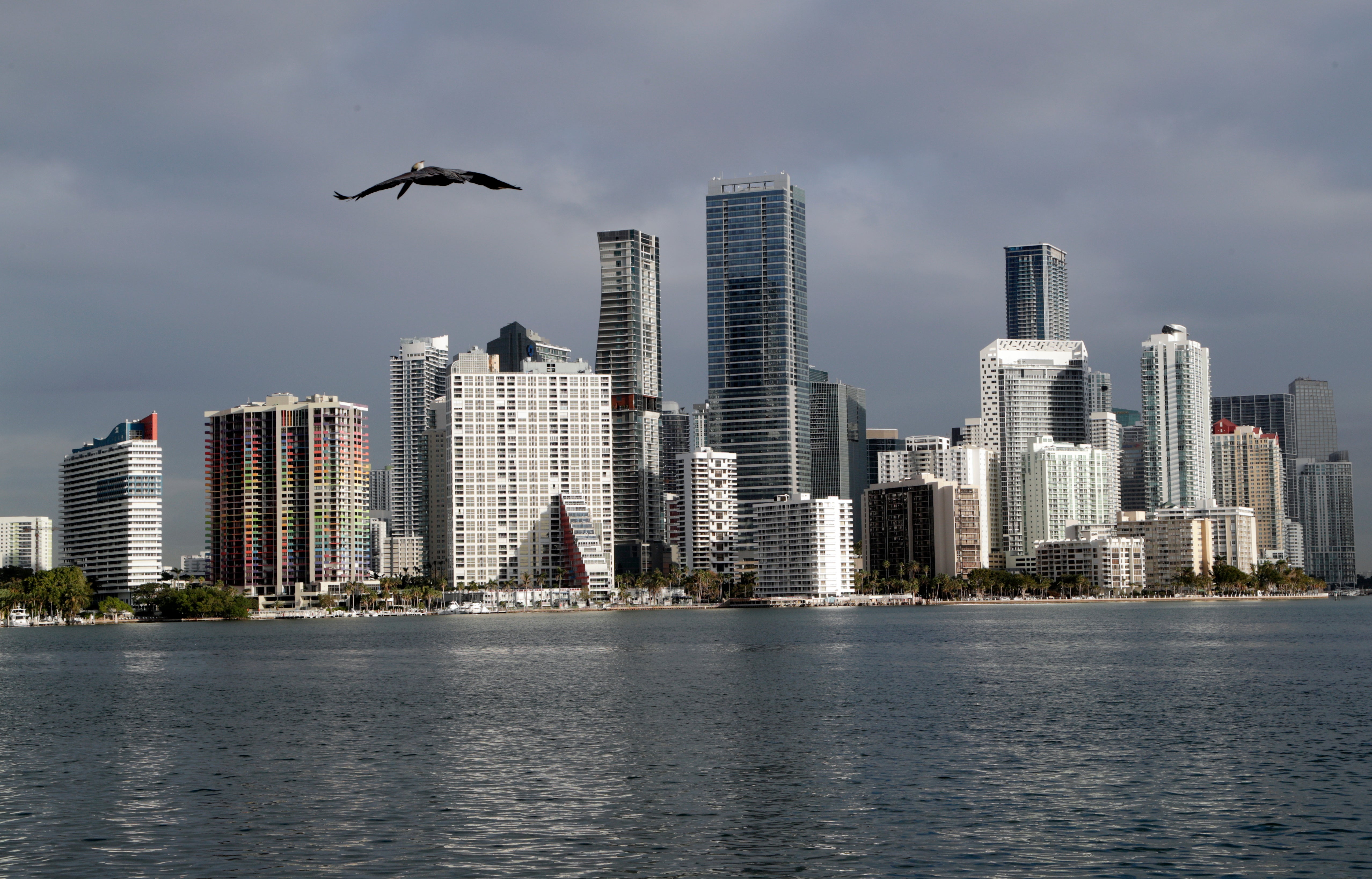Diverse group of cities have highest rates of gay households
Once known for singer Anita Bryant’s anti-gay rights campaign and a ban on gay and lesbian adoptions, Florida is now home to two metro areas with among the highest concentrations of gay and lesbian coupled households in the U.S. That's according to a report released this week by the Census Bureau

Your support helps us to tell the story
From reproductive rights to climate change to Big Tech, The Independent is on the ground when the story is developing. Whether it's investigating the financials of Elon Musk's pro-Trump PAC or producing our latest documentary, 'The A Word', which shines a light on the American women fighting for reproductive rights, we know how important it is to parse out the facts from the messaging.
At such a critical moment in US history, we need reporters on the ground. Your donation allows us to keep sending journalists to speak to both sides of the story.
The Independent is trusted by Americans across the entire political spectrum. And unlike many other quality news outlets, we choose not to lock Americans out of our reporting and analysis with paywalls. We believe quality journalism should be available to everyone, paid for by those who can afford it.
Your support makes all the difference.Once known for singer Anita Bryant's anti-gay rights campaign and a ban on gay and lesbian adoptions, Florida is now home to two metro areas with among the highest concentrations of gay and lesbian coupled households in the U.S., according to a new report released by the U.S. Census Bureau.
Orlando and Miami had the fourth and sixth highest percentages respectively of same sex coupled households in the U.S., according to the report released this week using data from the bureau's 2019 American Community Survey.
San Francisco, Portland and Seattle topped the list. Austin was No. 5 and Boston came in at No. 7. But they were joined in the top 10 by some unexpected metro areas like Baltimore Denver and Phoenix Noticeably absent were three of the nation's largest metros: New York, Los Angeles and Chicago. Though they have some of the nation's most visible LGBTQ communities, the vastness of their metro areas dilutes the concentration.
The appearance of these metros on the list shows that tolerance isn’t limited to large coastal cities, gay rights advocates said.
“You often think of LGBTQ people in large cities like San Francisco, but we're everywhere," said Jeremy LaMaster executive director of FreeState Justice, a Baltimore-based LGBTQ advocacy organization for Maryland.
The report focused on same sex couples, both married and unmarried, and not gay and lesbians who are single. About 1.5% of all coupled households nationwide were same sex. The cities on the top 10 list ranged in concentration from San Francisco's 2.8% to Baltimore's 2%.
In the District of Columbia, which was categorized along with states in the report, 7.1% of coupled households were same sex.
In Florida, acceptance of LGBTQ communities has been driven at the local level, with passage of human rights ordinances, fast-growing populations from all over the world and gay-friendly companies from the hospitality and entertainment industries, said Nadine Smith, executive director of Equality Florida, an LGBTQ advocacy group.
While Orlando already had a visible gay community with out elected officials and workforces like Disney World with large numbers of gays and lesbians, the collective grief from the massacre at the gay Pulse nightclub in 2016 helped push that acceptance into more conservative corners of civic life such as local churches.
“Miami is a port city and Orlando is the epicenter of amusement parks and hospitality, so it makes perfect sense," Smith said of the high concentrations of same sex households. “The cities have led the way for sure, rebuilding Florida's image from a really hateful history."
That history stretches back to the 1970s. That's when Bryant, an early-1960s pop singer and brand ambassador for the Florida Citrus Commission, headed a campaign that led to the repeal of an ordinance in Miami-Dade County prohibiting discrimination based on sexual orientation in one of the earliest organized fights against gay rights. Florida also was the last state in the U.S. to end its ban on gay and lesbian adoption when a court ruled it violated equal protection rights in 2010.
Austin, Orlando and Phoenix have been among the metropolitan areas with the largest population growth in recent years.
Phoenix's general meritocracy, which comes from being a relatively young community with a constant influx of new arrivals, has made it welcoming to gay and lesbians, said Angela Hughey, president of ONE Community, a business coalition that advocates for inclusion and equality.
“It's a very broad city and we are in every neighborhood," Hughey said Thursday.
In Baltimore, residents have had an appreciation for a camp aesthetic that now would overlap with queer culture. A favorite son, after all, is filmmaker John Waters, and the city celebrates the unconventional, as evidenced by the annual HONFest where celebrants sport beehive hairdos and cat-eye sunglasses. The city also has a vibrant vogue ball scene.
“Part of me feels like I need to give a shout-out to John Waters," said LaMaster, referring to the filmmaker behind cult movies made in Baltimore, such as “Pink Flamingos" and “Hairspray." “But it's not just John Waters. There is a rich heritage and history that can be found here.”
LaMaster, who lived in New York City before moving to Baltimore, said the Maryland city lacked the visible gay scene found in a neighborhood like Chelsea in New York City. But Baltimore made sense for same sex couples wanting to set up households in a state that has been a leader in laws prohibiting discrimination based on sexual orientation and gender identity, as well as allowing second-parent adoptions, he said.
“The work isn't done. That's my takeaway," La Master said. “Even though there has been tremendous progress, I think there's always room for improvement."
___
Follow Mike Schneider on Twitter at https://twitter.com/MikeSchneiderAP